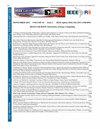Detection of recyclable solid waste using convolutional neural networks and PyTorch
IF 1.3
4区 工程技术
Q3 COMPUTER SCIENCE, INFORMATION SYSTEMS
引用次数: 0
Abstract
Waste management in the recycling business is a time-consuming and labor-intensive process. In this context, the need to improve accuracy and reduce the time associated with this process is highlighted. In order to improve the classification of recyclable solid waste and streamline the waste management process, the creation of a convolutional neural network (CNN) model using PyTorch was proposed. The MLOps methodology was implemented in the development of the proposed model. In the first phase, an interview was conducted to analyze the waste sorting process in the company GIRA. In the second phase, the Taco Trash Dataset was reclassified, a CNN architecture based on RetinaNet was designed and the model was trained with hyper parameters based on related works. The third phase, the model was evaluated by testing and A/B testing. The model demonstrated high accuracy in waste detection and classification. It successfully identified materials such as paper, cardboard, PET bottles, hard plastic containers, flexible plastics, cans, glass, Tetra Pak containers, Flex foam and PET bottle caps. The loss was minimal, reaching 0.02120%, equivalent to 97% accuracy, and 80% accuracy in a real environment based on the Technology Acceptance Model (TAM). It is concluded that the implementation of a sorting and waste detection model optimizes the time and improves the accuracy of the sorting process.利用卷积神经网络和 PyTorch 检测可回收固体废物
回收业务中的废物管理是一个耗时耗力的过程。在这种情况下,提高准确性和减少与这一过程相关的时间就显得尤为重要。为了改进可回收固体废物的分类并简化废物管理流程,建议使用 PyTorch 创建一个卷积神经网络 (CNN) 模型。在拟议模型的开发过程中采用了 MLOps 方法。在第一阶段,对 GIRA 公司的垃圾分类流程进行了访谈分析。在第二阶段,对 Taco 垃圾数据集进行了重新分类,设计了基于 RetinaNet 的 CNN 架构,并根据相关工作使用超参数对模型进行了训练。第三阶段,通过测试和 A/B 测试对模型进行评估。该模型在垃圾检测和分类方面表现出很高的准确性。它成功识别了纸张、纸板、聚酯瓶、硬塑料容器、软塑料、易拉罐、玻璃、利乐包装容器、软泡沫塑料和聚酯瓶盖等材料。损耗极小,达到 0.02120%,相当于 97% 的准确率,根据技术接受模型(TAM),在实际环境中的准确率为 80%。结论是,分拣和废物检测模型的实施优化了分拣过程的时间并提高了准确性。
本文章由计算机程序翻译,如有差异,请以英文原文为准。
求助全文
约1分钟内获得全文
求助全文
来源期刊

IEEE Latin America Transactions
COMPUTER SCIENCE, INFORMATION SYSTEMS-ENGINEERING, ELECTRICAL & ELECTRONIC
CiteScore
3.50
自引率
7.70%
发文量
192
审稿时长
3-8 weeks
期刊介绍:
IEEE Latin America Transactions (IEEE LATAM) is an interdisciplinary journal focused on the dissemination of original and quality research papers / review articles in Spanish and Portuguese of emerging topics in three main areas: Computing, Electric Energy and Electronics. Some of the sub-areas of the journal are, but not limited to: Automatic control, communications, instrumentation, artificial intelligence, power and industrial electronics, fault diagnosis and detection, transportation electrification, internet of things, electrical machines, circuits and systems, biomedicine and biomedical / haptic applications, secure communications, robotics, sensors and actuators, computer networks, smart grids, among others.
 求助内容:
求助内容: 应助结果提醒方式:
应助结果提醒方式:


